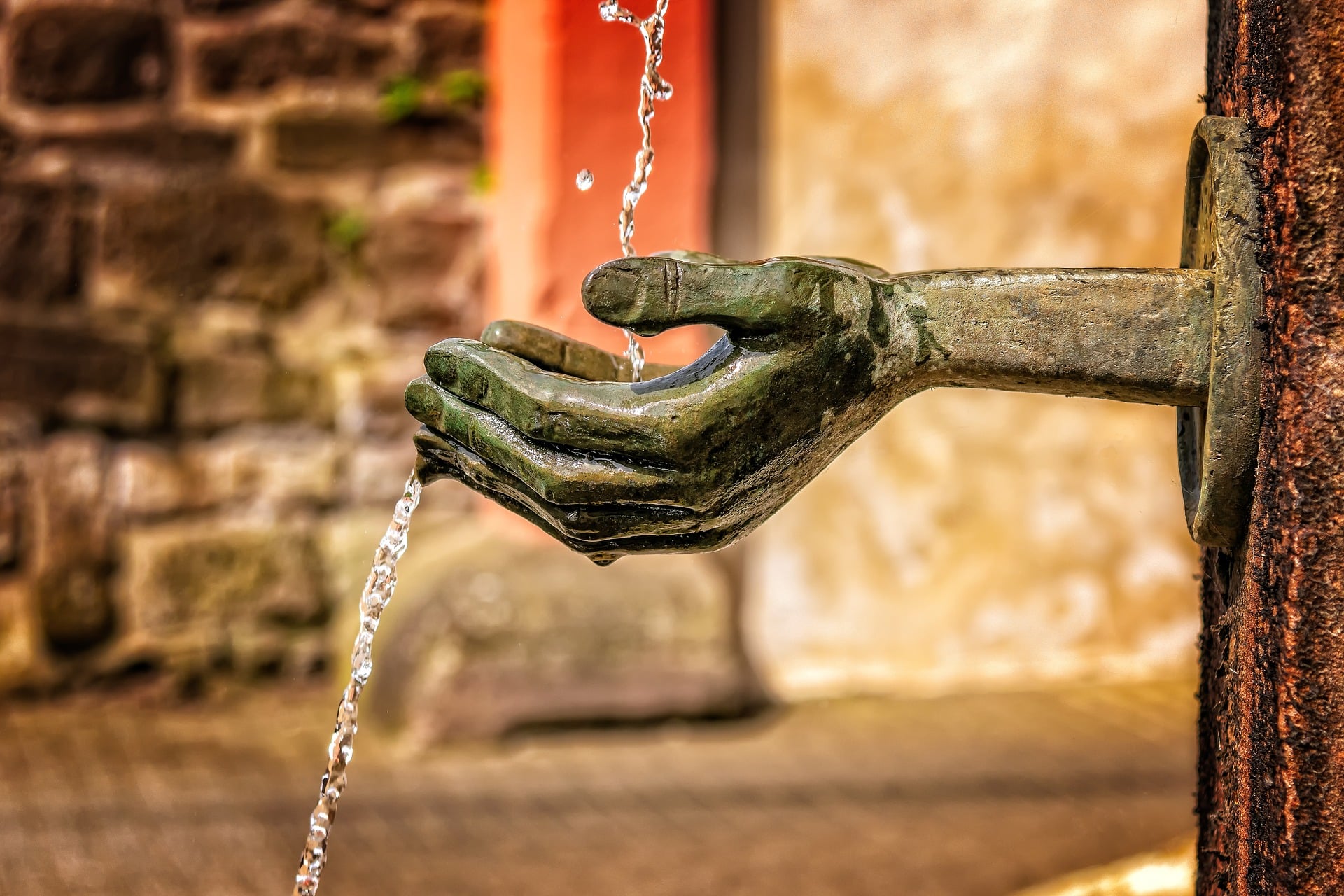The ancients said everything was composed of four elements: earth, air, fire, and water. Jesus used all these elements as tools for teaching and miracle-making, but water is a clear favorite. Foot-washing (I’ve heard rumors) was once part of sacramental ritual, and Baptism is the first and most universal sacrament, with some faith traditions being especially dramatic and generous with this precious, elemental fluid.
How physically and poetically proper! We gestate in the waters of our mother’s wombs. Our bodies are so moisture-driven that, deprived water, we shrivel and die.
Fountains, Little and Large
But no one would drink from a holy-water font, would they? This may be a trick question for those less familiar with the holy-water receptacles strategically hung near every Catholic classroom door in my youth. I saw it as spiritual largesse to have a container holding blessed water hanging near my bedroom doorway so that I could bless myself coming and going. I judged the “holiest” water to be that blessed at the Easter Vigil. It was the next best thing to living in church, I thought. Now, I know I was living in the domestic Church!
In Israel, my husband and I felt moved to buy a mezuzah, an ornate case containing two passages from the Book of Deuteronomy. These verses encourage the posting of the Great Commandments in one’s doorway (and one’s heart). Then I received a holy-water font as a gift.
The combination makes for a complex entry ritual, first touching the mezuzah to express delight in God’s law, then blessing oneself with holy water to recall Baptism!
In our small parish church, the baptismal font is well placed at the main entrance and its waters always seem fresh and inviting. I love to see the children on tiptoe, reaching up in order to bless themselves. This ample supply offers a much clearer suggestion of the living water the Samaritan woman found so desirable (see John 4:4-42).
All Water Holy
As the years pass, my experience of water has widened and deepened. I’ve been seasick. I’ve gone singing (or sighing) in the rain. I’ve sorely missed indoor plumbing, lamented dripping faucets, watered beloved roses, filled the birdbath and dutifully drunk eight glasses a day. I’ve experienced drought and surfeit. On the whole, I’ve given thanks.
In The Dream of the Earth, Father Thomas Berry writes of disruptions to the planet, including water, its major ingredient: “If the water is polluted, it can neither be drunk nor used for Baptism. Both in its physical reality and in its psychic symbolism, it is a source not of life, but of death.”
This contemporary thinker reinforces what I know from Scripture: Water has power, water is central to our well-being. From the second verse of Genesis to the final chapter of Revelation, the Spirit of God moves over the waters. I am called to keep the water pure and honor it as holy.
The Church’s uses of water are a worthy response to a most excellent gift. A little font can hardly bear the weight of so much meaning. Yet just one drop is added to the wine of Eucharist to represent all who share in the mystery. I thirst for blessing and it comes in torrents.
Holy Water
Using holy water recalls for us the Sacrament of Baptism and our rebirth through it to new life in Christ. Some new or recently renovated churches have located the baptistery at the entrance to the nave, the main part of the building, and use the baptismal font as the place from which worshipers take holy water to bless themselves on entering the church.
Churches, rooms within a house and people are all blessed with holy water as a sign of God’s generous love. Among many Irish people, the head of the household uses holy water to bless family members who are about to undertake a journey.








